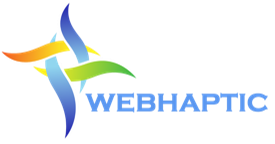Consumer Lending in Nigeria
Webhaptic intelligence limited is a major market research firm that provides important companies in the Consumer Lending business with great and appealing studies on current market trends. Market size, leading brands, the Covid19 impact, key supply and demand trends, detailed segmentation of international and local products, future forecasts of market trends and market growth, In-country research approach that is both robust and transparent, etc are all factors to be considered in our study. With our qualitative research, insight, and reliable growth estimates, you can better understand and assess competition threats and plan business strategy.
According to our analysis, Nigerian consumer loan is predicted to increase by 21.4 percent to N1.74 trillion in 2021, up from N1.42 trillion in 2020. The anticipated amount for 2021 is expected to be the highest since the survey began to focus on in 2016. Consumer lending in the country totaled N879.8 billion in 2016, N758.6 billion in 2017, N758.9 billion in 2018, and N1.11 trillion in 2019.
Also, the impact of COVID-19 on consumer lending in Nigeria cannot be exaggerated, as the local economy was hit by the recession as a result of multiple lockdown measures, leading to increased unemployment and lower discretionary incomes. Mainstream financial service providers were already wary of lending at the start of 2020, with most banks failing to reach the 65 percent loan-to-deposit ratio and the Central Bank of Nigeria imposing different punishments. Despite the negative effects of the COVID-19 virus on the macroeconomy, such as increased interest rates, currency inflation, and greater unemployment rates, consumer lending will continue to grow in 2021.
“The apex bank’s loan-to-deposit ratio (LDR) policy, which has compelled financial institutions to expand consumer lending to meet regulatory guidelines, is a major cause for the sustained expansion.” The outstanding amount on consumer lending was dropping before the LDR policy, according to our findings.
Although the percentage of consumer loans to total banking loans continues to rise, it remains below 10% due to the massive structure of commercial lending, with banks preferring to focus more on secured commercial lending to generate more income given the larger budgets of businesses versus individuals, the percentage of consumer loans to total banking loans remains below 10%.
Many lending platforms are taking over the consumer lending industry in Nigeria, unlike traditional banks, which offer loans with high-interest rates, lengthy paperwork or regulations, and the requirement of guarantors, among other things, fin-tech businesses, also known as lending platforms, offer loans straightforwardly and efficiently. Here are a list of consumers lending in Nigeria that is very effective and reliable; Palmcredit, Carbon, Branch, Migo (Kwikmoney), Lidya, FairMoney, Renmoney, Aella Credit, QuickCheck, Sokoloan, KiaKia etc
Webhaptic Intelligence Limited’s consumer lending study can help you grasp the latest market trends and future growth opportunities in Nigeria’s consumer lending industry. Trust our experts and become a client of Webhaptic Intelligence in Nigeria. We invite you to use our exceptional services provided.
To obtain a quote for market research service into consumers lending in Nigeria, send an email to info@webhaptic.com or complete the form below.
